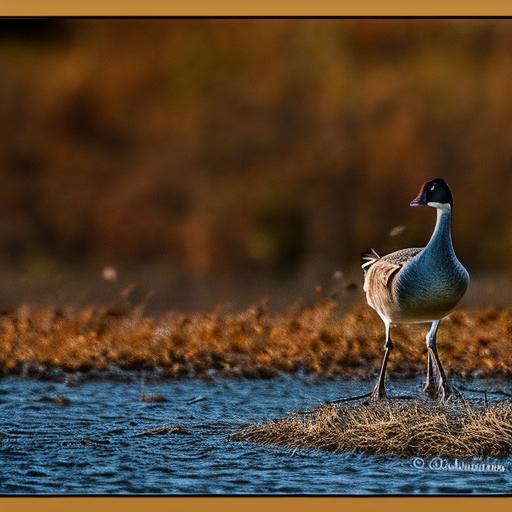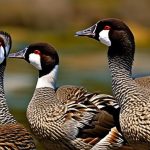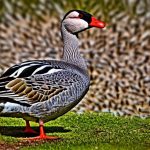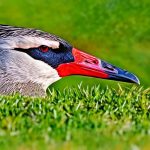Using geese as natural deterrents for deer is an innovative and eco-friendly approach to deer control that has gained increasing interest in recent years. As the demand for sustainable and environmentally friendly methods of managing deer populations grows, the use of geese has emerged as a promising solution. This article will explore the science behind geese keeping deer away, the benefits of using geese for deer control, and the factors that influence their effectiveness. Additionally, we will discuss best practices for using geese effectively, potential drawbacks of this method, and compare the effectiveness of geese to other natural deterrents. Finally, we will examine case studies of successful geese-based deer control programs and discuss the future potential of geese as a sustainable solution for deer management.
Key Takeaways
- Geese can be used as a natural deterrent for deer.
- Geese are effective in keeping deer away due to their territorial behavior and loud honking.
- Using geese for deer control is eco-friendly and safe for both animals and humans.
- The effectiveness of geese in deterring deer depends on factors such as the number of geese and the size of the area.
- Best practices for using geese include providing them with adequate food and shelter and monitoring their behavior.
The Science Behind Geese Keeping Deer Away
Geese are natural predators of deer and can intimidate them with their presence. When geese are introduced into an area, their presence alone can deter deer from entering. Geese are known to be territorial animals and will defend their space aggressively. This behavior can be used to disrupt deer feeding patterns and reduce their access to food sources.
Geese are also known to be vocal animals, and their honking can further intimidate deer. The loud noise can startle deer and make them feel threatened, causing them to avoid areas where geese are present. Additionally, geese have a keen sense of sight and can detect movement from a distance. This heightened awareness can help them spot approaching deer and alert others in the flock.
Benefits of Using Geese to Control Deer Populations
Using geese as a natural deterrent for deer offers several advantages over traditional methods of deer control, such as hunting or fencing. One of the main benefits is cost-effectiveness. While hunting or fencing can be expensive and require ongoing maintenance, using geese requires minimal investment once they are established in an area. Geese are self-sufficient animals that can find their own food and require little human intervention.
Another advantage of using geese is their low maintenance requirements. Once geese are introduced into an area, they can thrive on natural food sources such as grass, insects, and aquatic plants. They also require minimal shelter and can adapt to various climates and environments. This makes them a low-maintenance option for deer control.
How Geese Can Be Used as a Safe and Eco-Friendly Alternative to Traditional Methods of Deer Control
Using geese for deer control offers several environmental benefits. Unlike traditional methods that may involve the use of harmful chemicals or pesticides, geese provide a natural and eco-friendly solution. Geese do not require the use of any chemicals or toxins to deter deer, making them a safe option for both humans and wildlife.
In addition to being safe, using geese can also reduce the risk of accidents or injuries associated with hunting or fencing. Hunting can be dangerous and requires skilled marksmanship, while fencing can pose risks to both humans and animals if not properly maintained. Geese provide a non-lethal and non-invasive method of deer control that minimizes these risks.
Factors That Influence the Effectiveness of Geese in Deterring Deer
Several factors can influence the effectiveness of using geese to deter deer. One important factor is the number of geese present in an area. A larger flock of geese can have a greater impact on deterring deer due to their increased presence and intimidation factor.
The behavior of the geese also plays a role in their effectiveness. Geese that are more aggressive and territorial are more likely to deter deer effectively. It is important to select geese breeds known for their protective behavior when implementing a geese-based deer control program.
The size of the area being protected is another factor to consider. Larger areas may require a larger number of geese to effectively deter deer. It is important to assess the size of the area and the density of the deer population to determine the appropriate number of geese needed.
Careful planning and management are essential to ensure the effectiveness of geese-based deer control programs. Regular monitoring and adjustment of the program may be necessary to address any changes in deer behavior or population dynamics.
Best Practices for Using Geese to Keep Deer Away
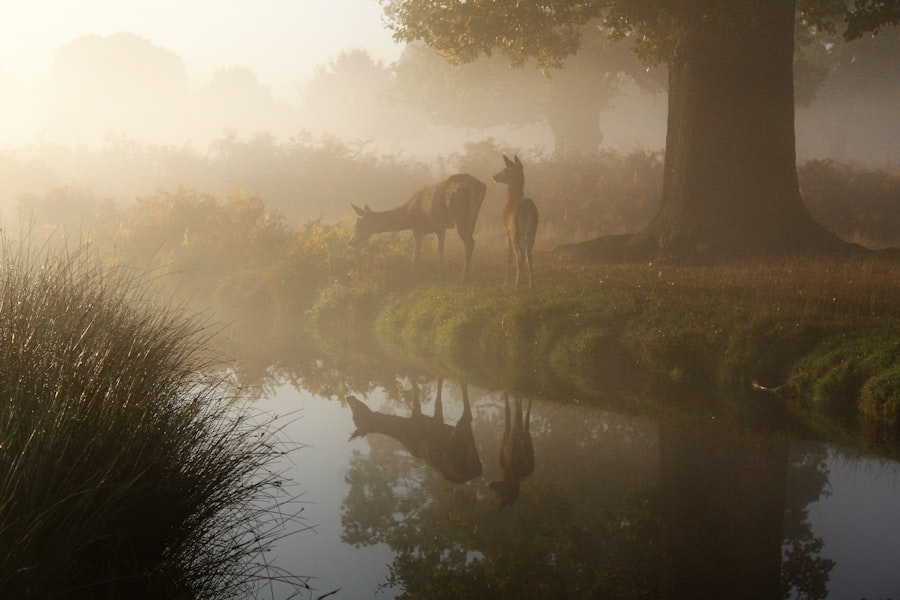
To use geese effectively for deer control, it is important to select the right breed of geese. Breeds known for their protective behavior, such as Toulouse or Embden geese, are recommended. These breeds are more likely to exhibit aggressive behavior towards deer and provide a stronger deterrent effect.
Providing adequate food and shelter for the geese is also important. Geese require access to natural food sources such as grass, insects, and aquatic plants. Providing a suitable habitat with access to these food sources will help ensure the health and well-being of the geese.
Regular monitoring of the geese and their behavior is crucial to assess their effectiveness in deterring deer. If necessary, adjustments can be made to the program, such as increasing the number of geese or relocating them to areas with higher deer activity.
Potential Drawbacks of Using Geese for Deer Control
While using geese for deer control offers many benefits, there are also potential drawbacks to consider. One challenge is the need for ongoing management. Geese require regular monitoring and maintenance to ensure their health and well-being. This includes providing adequate food and shelter, as well as addressing any potential conflicts with other wildlife or humans.
Another potential drawback is the potential for conflicts with other wildlife or humans. Geese can be aggressive animals, and conflicts may arise if they come into contact with other animals or humans. It is important to carefully manage the geese and address any conflicts that may arise.
Comparing the Effectiveness of Geese to Other Natural Deterrents for Deer
Geese are not the only natural deterrents that can be used to control deer populations. Other options include dogs and llamas. Each method has its own unique advantages and disadvantages.
Dogs are known for their ability to chase and intimidate deer. They can be trained to patrol an area and deter deer from entering. However, dogs require ongoing training and supervision, and their effectiveness may vary depending on the breed and individual dog.
Llamas are also used as natural deterrents for deer. Llamas have a natural instinct to protect their herd and can intimidate deer with their size and presence. However, llamas require specific care and management, and their effectiveness may vary depending on the individual llama.
Case Studies of Successful Geese-Based Deer Control Programs
Several successful geese-based deer control programs have been implemented in various settings, such as parks or residential areas. One example is the use of geese in Central Park in New York City. Geese were introduced to help control the deer population and have been effective in deterring deer from entering certain areas of the park.
Another example is the use of geese in residential neighborhoods. Geese have been used to deter deer from entering gardens and damaging plants. The presence of geese has proven to be an effective deterrent, reducing the need for other methods such as fencing or chemical repellents.
The success of these programs can be attributed to careful planning and management, as well as the selection of geese breeds known for their protective behavior. Regular monitoring and adjustment of the program have also been key factors in their success.
Conclusion and Future Potential for Geese as a Sustainable Solution for Deer Management
Using geese as natural deterrents for deer offers a sustainable and eco-friendly solution for deer management. The science behind geese keeping deer away is based on their natural predatory behavior and ability to intimidate deer with their presence. The benefits of using geese include cost-effectiveness, low maintenance requirements, and environmental and safety advantages.
Factors that influence the effectiveness of geese in deterring deer include the number of geese, their behavior, and the size of the area being protected. Best practices for using geese effectively include selecting the right breed, providing adequate food and shelter, and regular monitoring and adjustment of the program.
While there are potential drawbacks to using geese for deer control, careful management can help address these challenges. Comparing the effectiveness of geese to other natural deterrents such as dogs or llamas shows that each method has its own unique advantages and disadvantages.
Case studies of successful geese-based deer control programs demonstrate the potential of this method in various settings. However, further research and development are needed to optimize the use of geese for deer management. With careful planning and management, geese have the potential to be a sustainable and eco-friendly solution for deer control.
If you’re interested in using animals to help with pest control, you might also want to check out this article on how geese can keep deer away. Geese are known for their honking and aggressive behavior, which can deter deer from entering your property. To learn more about this fascinating method of pest control, click here: https://poultrywizard.com/keeping-chickens/floor-of-chicken-coop/.
Meet Walter, the feathered-friend fanatic of Florida! Nestled in the sunshine state, Walter struts through life with his feathered companions, clucking his way to happiness. With a coop that’s fancier than a five-star hotel, he’s the Don Juan of the chicken world. When he’s not teaching his hens to do the cha-cha, you’ll find him in a heated debate with his prized rooster, Sir Clucks-a-Lot. Walter’s poultry passion is no yolk; he’s the sunny-side-up guy you never knew you needed in your flock of friends!

